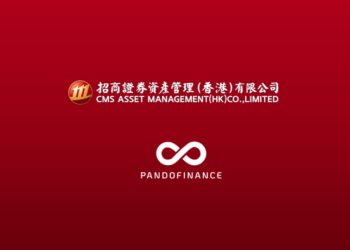During the surge of a Cryptocurrency Reserve Company, what are some potential "gotchas"?
More and more public companies are leveraging traditional financial instruments such as PIPEs, SPACs, ATMs, convertible bonds, etc., to build a crypto treasury, strategically optimizing their capital structure to drive market cap expansion. However, this approach also introduces structural risks of liquidity mismatch and retail investor bag-holding.
More and more public companies are starting to "reserve cryptocurrency" now.
They are no longer just buying BTC or ETH, but are emulating MicroStrategy, building a replicable financial model: through PIPE, SPAC, ATM, Convertible Bonds, and other traditional financial instruments, they conduct large-scale financing, establish positions, and create momentum. They then add the new narrative of the "on-chain treasury," incorporating cryptocurrencies such as Bitcoin, Ethereum, and SOL into the company's core balance sheet.
This is not just a change in asset allocation strategy, but rather a new form of "financial engineering": a market experiment collectively driven by capital, narrative, and regulatory loopholes. Institutions such as UTXO Management, Sora Ventures, Consensys, Galaxy, Pantera have successively entered the scene, facilitating several marginal public companies to undergo a "transformation" and become "cryptocurrency reserve-type standout stocks" on the US or Hong Kong stock markets.
However, this seemingly innovative capital feast is also arousing caution among old-school finance professionals. On July 18, Wall Street's renowned short seller Jim Chanos warned that the current "Bitcoin treasury frenzy" is mirroring the 2021 SPAC bubble—companies are buying coins through issuing convertible bonds and preferred stocks without actual business support. "There are announcements of several billion dollars every day, exactly like the frenzy back then," he said.
This article examines the four key tools and representative cases behind this trend, attempting to answer a question: When traditional financial instruments meet cryptographic assets, how can a company evolve from "buying coins" to "making moves"? And how can retail investors identify the risk signals in this capital game?
How Do Financing Instruments Build a "Coin-Buying Company"?
PIPE: Institutional Discounted Entry, Retail FOMO
PIPE (Private Investment in Public Equity) refers to a public company issuing stock or convertible bonds to specific institutional investors at a discounted price to achieve rapid financing. Compared to traditional public offerings, PIPE does not require a cumbersome approval process and can inject funds quickly, making it a "strategic blood transfusion" tool during tight financing windows or uncertain market conditions.
In the trend of cryptocurrency treasuries, PIPE has been given another function: creating a signal of "institutional entry," driving the stock price to rise rapidly, and providing "market validation" for the project narrative. Many public companies originally unrelated to crypto introduce funding through PIPE, purchase large amounts of BTC, ETH, or SOL, and quickly transform into a new identity as a "strategic reserve-type enterprise." For example, SharpLink Gaming (SBET) saw its stock price surge over tenfold shortly after announcing a $425 million PIPE financing to establish an ETH treasury.
However, the impact of a PIPE extends far beyond the surface-level benefits. In terms of its structure, PIPE investors typically have a more favorable entry price, lock-up arrangements, and liquidity channels. Once a company files an S-3 registration statement, the relevant shares can be listed for public trading, allowing institutional investors to choose to realize their investments. Although the S-3 filing is essentially a technicality and does not directly imply that selling has already occurred, in a highly emotional market, this action is often misinterpreted as "institutions starting to cash out," triggering market panic.
SharpLink's experience serves as a typical example: on June 12, 2025, the company filed an S-3 registration statement, allowing PIPE shares to be publicly resold. Despite the Chairman and Ethereum co-founder Joseph Lubin publicly clarifying that "this is a standard follow-up process in traditional finance," and stating that neither he nor Consensys had sold any shares, the market sentiment was irreversibly damaged. The stock price plummeted by 54.4% over the following five trading days, becoming a textbook example of the structural risk in a PIPE model. Although the stock price later rebounded, the dramatic fluctuations of "rallying sharply then crashing severely" reflected a structural fissure in the PIPE process.
Furthermore, BitMine Immersion Technologies (BMNR) also staged a "rally and crash" scenario after announcing its PIPE structure. Following the announcement of a $2 billion PIPE financing for Ethereum treasury development, the stock price skyrocketed before plummeting, experiencing a nearly 39% decline in a single day, making it one of the four high-risk "crypto treasury stock" companies mentioned in the Unchained report.
The fundamental risk of a PIPE lies in information asymmetry and liquidity mismatch: institutional investors enter at a discount, with reserved exit mechanisms, while retail investors often participate passively in a positive narrative such as "successful financing" or a "treasury in cryptocurrency." They then bear the risk of facing a selling pressure during unlock periods. In the traditional financial market, this "pump and dump" structure has long been controversial. In a less regulated and more speculative cryptocurrency sector, this structural imbalance is further amplified, becoming another aspect of risk in a capital narrative-driven market.
SPAC: Putting Valuation in a Press Release Rather Than a Financial Report
A SPAC (Special Purpose Acquisition Company) was originally a tool used in the traditional market for shell company listings: a group of sponsors first established a blank-check company, raised funds through an IPO, and then within a specified period sought and merged with a private company to bypass the conventional IPO process and achieve a "quick listing."
Meanwhile, in the crypto market, SPACs have been given a new purpose: to provide a financial vehicle for "strategic reserve" companies to securitize their Bitcoin, Ethereum, and other digital asset treasuries, integrate them into the exchange system, and thus achieve dual-purpose financing and liquidity.
Such companies often lack a clear business path, product model, or source of revenue. Their core strategy is to first purchase crypto assets through PIPE financing, build a "coin-based" balance sheet, then use a SPAC merger to enter the public market, packaging to investors an investment narrative of "holding coins equals growth."
Typical representatives include Twenty One Capital, ProCap, and ReserveOne, with most of these projects revolving around a simple model: raising funds to purchase Bitcoin and tuck it into a stock ticker. For example, Twenty One Capital holds over 30,000 Bitcoins, merged with a SPAC backed by Cantor Fitzgerald, and raised $5.85 billion through PIPE and convertible bond financing, with some funds used for on-chain yield strategies and Bitcoin financial product development. ProCap, supported by Pompliano, focuses on Bitcoin treasury development for lending and staking businesses. ReserveOne is more diversified, holding assets such as BTC, ETH, SOL, and participating in institutional staking and over-the-counter lending.

In addition, such companies are usually not satisfied with just "hodling." They often further issue convertible bonds and new shares to raise more funds to purchase more Bitcoin, forming a "structural leverage model" similar to MicroStrategy's. As long as the coin price rises, the company's valuation can inflate significantly.
The biggest advantage of the SPAC model is time and control. Compared to the 12–18 months required for a traditional IPO, a SPAC merger can theoretically be completed in 4–6 months, and the narrative space is more flexible. Founders can tell a future story without disclosing existing revenue, lead valuation negotiations, and retain more ownership. Although in reality, such crypto projects often face a longer regulatory review period (such as Circle ultimately abandoning the SPAC route for IPO), the SPAC path remains popular, especially for "coin-based companies" that have not yet established revenue-generating capabilities as it provides a shortcut around product, user, and financial fundamentals.
More importantly, the "publicly traded company" status brought by SPACs carries a natural legitimacy in investor perception. The stock ticker can be included in ETFs, traded by hedge funds, and listed on Robinhood. Even though the underlying asset is a digital currency, the packaging aligns with the language system of traditional finance.
At the same time, such structures often carry strong "signaling value": once a large-scale PIPE financing is announced or a partnership with a well-known financial institution is reached, retail investor sentiment can be quickly activated. Twenty One Capital has attracted market attention precisely because it is backed by endorsements from multiple parties such as Tether, Cantor, and SoftBank, even though the company's actual operations have not yet begun.
However, what SPACs bring is not just convenience and prestige; their structural risks are also significant.
Business Model Drift and Overstretched Narrative: Many companies that merge with SPACs themselves lack stable revenue, and their valuation highly depends on whether the "Bitcoin strategy" can continue to attract attention. Once market sentiment reverses or regulations tighten, stock prices will quickly fall.
Institutional Favoritism and Structural Imbalance: Sponsors and PIPE investors typically enjoy enhanced voting rights, early unlock periods, pricing advantages, and other privileges, while retail investors are in a dual disadvantage of information and rights, experiencing significant dilution of equity.
Compliance Operations and Disclosure Challenges: After completing a merger, companies must take on responsibilities as public companies, such as audits, compliance, risk disclosure, especially in the context of incomplete digital asset accounting rules, making it prone to financial reporting confusion and audit risks.
Valuation Bubble and Redemption Pressure: SPACs often experience inflated valuations early in their listing due to narrative expectations. If retail investors massively redeem their shares during a sentiment reversal, the company will face cash flow constraints, anticipated funding failures, or even trigger secondary bankruptcy risks.
The more fundamental issue is that SPAC is a financial structure, not a value creator. It is essentially a "narrative container" that packages Bitcoin's future vision, institutional endorsements, and capital leverage plans into a tradable stock code. When Bitcoin is bullish, it appears more attractive than an ETF; but when the market turns, its complex structure and fragile governance will be more thoroughly exposed.
ATM: Cash Printing Anytime, More Dip, More Release
ATM (At-the-Market Offering), originally a flexible financing tool, allows public companies to sell shares on the open market in stages and raise funds in real-time based on market prices. In traditional capital markets, it is often used to hedge operational risks or supplement cash flow. In the crypto market, ATM has been given another function: to become a strategic reserve for companies to accumulate Bitcoin at any time and maintain liquidity, serving as a "self-financing channel."
The typical approach is as follows: the company first builds a Bitcoin treasury narrative, then launches an ATM program where, without a specified price and time window, it continuously sells shares to the market in exchange for cash to buy more Bitcoin. It does not require specific investors to participate like a PIPE, nor does it need to disclose a complex process like an IPO, making it more suitable for asset allocation-oriented companies with flexible pacing and narrative leadership.
For example, the Canadian listed company LQWD Technologies announced in July 2025 the launch of an ATM program, allowing it to periodically sell up to 10 million Canadian dollars of common shares to the market. In the official statement, the ATM program "enhanced the company's Bitcoin reserve capacity and supported its global Lightning Network infrastructure expansion," clearly conveying its growth path centered around Bitcoin as a core asset. Another example is the Bitcoin mining company BitFuFu, which signed ATM agreements with multiple underwriters in June, planning to raise up to $150 million through this mechanism and has formally filed with the SEC. Their official documents indicate that this will help the company raise funds based on market dynamics without the need for pre-set financing windows or triggers.
However, the flexibility of ATM also means higher uncertainty. While companies are required to submit a registration statement to the SEC (usually Form S-3), explaining the issuance size and plan, and undergo dual regulation by the SEC and FINRA, the issuance can occur at any point without prior disclosure of specific prices and times. This "no warning" issuance mechanism is particularly sensitive when the stock price is declining, easily triggering a "downward spiral" of dilution, weakening market confidence, and damaging shareholder equity. Due to highly asymmetric information, retail investors are more likely to passively bear risks in this process.
Additionally, ATM is not suitable for all companies. If a company does not have "Well-Known Seasoned Issuer" (WKSI) status, it also needs to comply with the "one-third rule," which means that the fundraising through ATM in a 12-month period must not exceed one-third of its public float market value. All transactions during the issuance process must be completed through regulated brokers, and the company must also disclose fundraising progress and fund usage in financial reports or through 8-K filings.
Overall, ATM is a means of centralizing funding power: companies do not need to rely on banks, do not need to raise funds externally, and only need to "press a button" to raise cash to accumulate Bitcoin and Ethereum. For the founding team, this is an extremely attractive path; however, for investors, it may mean passive dilution without warning. Therefore, behind this "flexibility" is a long-term test of governance ability, transparency, and market trust.
Convertible Bond: Financing + Arbitrage, a "Two-Pronged" Approach
A Convertible Bond is a financing instrument with both debt and equity characteristics, allowing investors to enjoy bond interest while retaining the right to convert the bond into company stock, providing a dual path of "fixed-income security" and "equity potential." In the crypto industry, this tool is widely used for strategic financing, especially favored by companies that wish to raise funds to "accumulate Bitcoin" without immediately diluting their shares.
Its appeal lies in the fact that for companies, convertible bonds can raise large amounts of funds at a low coupon rate (even zero); for institutional investors, it provides an arbitrage opportunity of "downside protection and upside stock price growth." Many mining companies, stablecoin platforms, and on-chain infrastructure projects have introduced strategic funds through convertible bonds. However, this also lays the groundwork for dilution risk: once the stock price reaches the conversion condition, the bonds will rapidly convert into stocks, releasing a large amount of selling pressure and causing a sudden impact on the market.
MicroStrategy is a typical case of using convertible bonds for "strategic reserve-based accumulation." Since 2020, the company has issued two convertible bonds, raising a total of $1.7 billion, all used to purchase Bitcoin. The first bond issued in December 2020 was for a 5-year term, with a coupon rate of only 0.75% and a conversion price of $398 (a 37% premium); the second bond issued in February 2021 was even at 0% interest rate, a 6-year term, and a conversion price of $1,432 (a 50% premium), yet it still received $1.05 billion in oversubscription. MicroStrategy leveraged its holdings of over 90,000 Bitcoins at almost zero leverage cost, achieved super accumulation of Bitcoin, and its CEO, Michael Saylor, was thus dubbed the "biggest gambler in the crypto world."
However, this model is not without its costs. MicroStrategy's financial leverage has far exceeded traditional corporate standards, and if the Bitcoin price falls significantly, the company's net assets could turn negative. As shown in an IDEG report, when BTC falls below $17,500, MicroStrategy will face a situation where its liabilities exceed its assets. In addition, since its convertible bonds are in the form of private placements, some mandatory redemption and conversion terms have not been disclosed, further exacerbating market uncertainty about the future dilution pace.
Overall, convertible bonds are a double-edged sword: they provide companies with a high degree of freedom between "financing without dilution" and "strategic accumulation," but they may also trigger concentrated selling pressure at a certain moment. Especially under asymmetric information conditions, ordinary investors often find it difficult to perceive the specific conversion trigger points and end up as the ultimate dilution bearers.

Epilogue: Above Narrative, Structure is King
On July 18, Wall Street's renowned short seller Jim Chanos likened this "crypto treasury frenzy" to the 2021 SPAC craze during a podcast episode—a time when $900 billion was raised within three months but eventually collapsed collectively, resulting in a river of blood. He pointed out that the difference this time around is that companies are acquiring Bitcoin through issuing convertible bonds and preferred shares, yet there is no actual business support. "We see announcements of billions almost every day," he said, "which is strikingly similar to the SPAC madness of yesteryears."
Simultaneously, a report from "Unchained" further pointed out that such "crypto treasury companies" face severe structural risks. The report cited representative projects such as SATO, Metaplanet, Core Scientific, highlighting that their true asset net value (mNAV) is far below market valuation, coupled with issues such as unclear disclosure, insufficient treasury quality, and complex structures. Once market sentiment reverses, they are highly likely to transition from "crypto reserves" to "financial nuclear bombs."
For the average investor, "Corporate Crypto Purchase" is much more complex than it appears on the surface. What you see are announcements, price surges, narratives, and numbers, but what truly drives price volatility is often not the coin price itself, but the design of the capital structure.
PIPE determines who can enter at a discounted price, who is responsible for buying up the shares; SPAC determines whether a company can bypass financial due diligence and tell a story directly; ATM determines whether the company is still "selling on the dip" when the stock price falls; convertible bonds determine when someone suddenly converts debt into stock and initiates mass sell-offs.
In these structures, retail investors are often placed at the "back of the line": no privileged information, no liquidity protection. What may seem like an investment in "believing in crypto" actually exposes one to multiple risks of leverage, liquidity, and governance structures.
Therefore, when financial engineering enters the narrative battlefield, investing in a crypto company is no longer just about being bullish on BTC or ETH. The real risk lies not in whether a company has purchased crypto, but whether you can understand how it is "setting the stage."
How market capitalization inflates with the coin price, and how, in turn, it releases selling pressure through the structure—this design process determines whether you are participating in growth or setting off the fuse for the next round of a crash.
Disclaimer: The content of this article solely reflects the author's opinion and does not represent the platform in any capacity. This article is not intended to serve as a reference for making investment decisions.
You may also like
GENIUS Act Drives Institutional Demand for Ethereum, Says Bernstein
Ethereum May Increase Gas Limit to 45 Million, Validators Support
SEC Weighs “Innovation Exemption” to Accelerate Tokenization Shift
The U.S. Securities and Exchange Commission (SEC) is weighing a potential “innovation exemption” to accelerate the adoption of tokenized assets, signaling a possible shift in how the agency approaches blockchain-based financial infrastructure.

Global Crypto Market Cap Surpasses $4 Trillion, Marking New Era of Institutional Adoption and Altcoin Growth
On July 17, 2025, the global cryptocurrency market capitalization surpassed the $4 trillion milestone for the first time, signaling a significant evolution in the crypto industry’s maturity and acceptance as a mainstream asset class.

